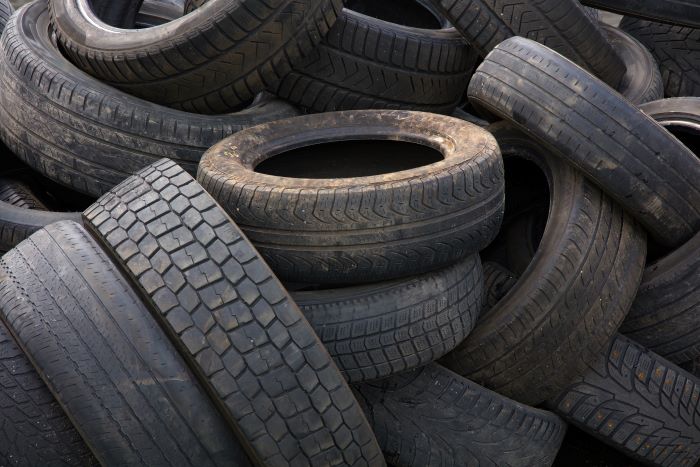The Complete Guide to Tire Recycling: Understanding the Process, Benefits, and Environmental Impact

S&S Tire and Best-One Tire is a full service commercial tire partner for long-haul truckers, freight companies, and owner-operators throughout Alabama, Kentucky, Tennessee, and West Virginia. Our services include commercial fleet inspections, retreading, and much more. Our team of experts will make sure that your trucking business is handled efficiently and professionally.
Delve into the world of tire recycling with our comprehensive guide, which explores the process, benefits, and environmental impact of this important practice. From understanding the intricate recycling process to uncovering the numerous benefits and positive environmental effects, this article provides valuable insights for readers of all backgrounds.
What is Tire Recycling?
Tire recycling is the process of reusing old, worn-out tires to create new products. Instead of allowing used tires to end up in landfills or be illegally dumped, recycling them helps to reduce environmental impact and create valuable materials for various industries.
The importance of recycling tires cannot be overstated. Every year, millions of tires are discarded, posing a significant environmental challenge. Improper disposal of tires can lead to air and water pollution, as well as the risk of fire hazards. By recycling tires, we can mitigate these risks and contribute to a more sustainable future.
The Tire Recycling Process
The tire recycling process involves several key stages:
Collection and transportation of used tires
Used tires are collected from various sources, including tire retailers, auto repair shops, and individuals. They are then transported to recycling facilities where the process begins.
Sorting and inspection of tires
Upon arrival at the recycling facility, the tires are sorted and inspected to determine their condition and potential for recycling. This step helps to identify tires that can be reused or recycled, while ensuring that any unusable tires are disposed of properly.
Shredding and grinding process
The next step involves shredding the tires into smaller pieces using specialized machinery. This process helps to break down the tires into manageable pieces that can be further processed.
Uses of recycled tire materials
The shredded tire pieces are then processed further to create various recycled materials, such as rubber mulch, crumb rubber, and rubber powder. These materials can be used in a wide range of applications, including playground surfaces, athletic tracks, and road construction.
Benefits of Tire Recycling
Environmental benefits
Tire recycling helps to reduce the burden on landfills, conserves natural resources, and minimizes the environmental impact of tire disposal. By reusing and repurposing old tires, we can significantly reduce the carbon footprint associated with tire manufacturing.
Economic benefits
Economic benefits also arise from tire recycling. The industry creates jobs in collection, processing, and repurposing of tire materials. It also generates revenue through the sale of recycled products. Furthermore, recycled tire products can be less expensive than those made from virgin materials, offering cost savings for businesses and consumers.
Energy conservation
Additionally, tire recycling contributes to energy conservation. The process of manufacturing new tires from raw materials is energy-intensive. By recycling existing tires, energy consumption is significantly reduced, which in turn lowers greenhouse gas emissions. This is particularly important in the context of climate change, as reducing emissions is essential for mitigating global warming and its associated effects.
The Environmental Impact of Tire Recycling
Tire recycling is crucial for both environmental sustainability and public health. Tires are made from durable materials like rubber, steel, and synthetic fibers, designed to withstand harsh conditions and resist degradation. However, these same properties make them problematic when discarded, as they do not decompose easily in landfills. The accumulation of scrap tires in landfills poses significant environmental hazards, including the potential for fires, which can release toxic gases and create breeding grounds for disease-carrying pests such as mosquitoes.
Reduction of landfill waste
By recycling tires, we can significantly reduce the amount of waste that ends up in landfills. This, in turn, helps to alleviate the pressure on landfill capacity and reduces the environmental impact of tire disposal.
Prevention of air and water pollution
Improperly disposed tires can release harmful chemicals and pollutants into the air and water, posing a threat to the environment and public health. Recycling tires helps to prevent these pollutants from entering the ecosystem.
Conservation of natural resources
Tire recycling contributes to the conservation of natural resources, such as rubber and oil, which are used in the production of new tires. By reusing these materials, we can reduce the need for extracting and processing raw resources.
Tire recycling offers a multitude of benefits, including environmental, economic, and energy-related advantages. By supporting tire recycling efforts, we can make a positive impact on the environment and contribute to a more sustainable future. Whether it’s through proper tire disposal or actively seeking out products made from recycled tire materials, each individual can play a part in supporting tire recycling initiatives. Let’s work together to ensure that old tires are given a new life through recycling, and in doing so, help create a cleaner and healthier planet for future generations.

